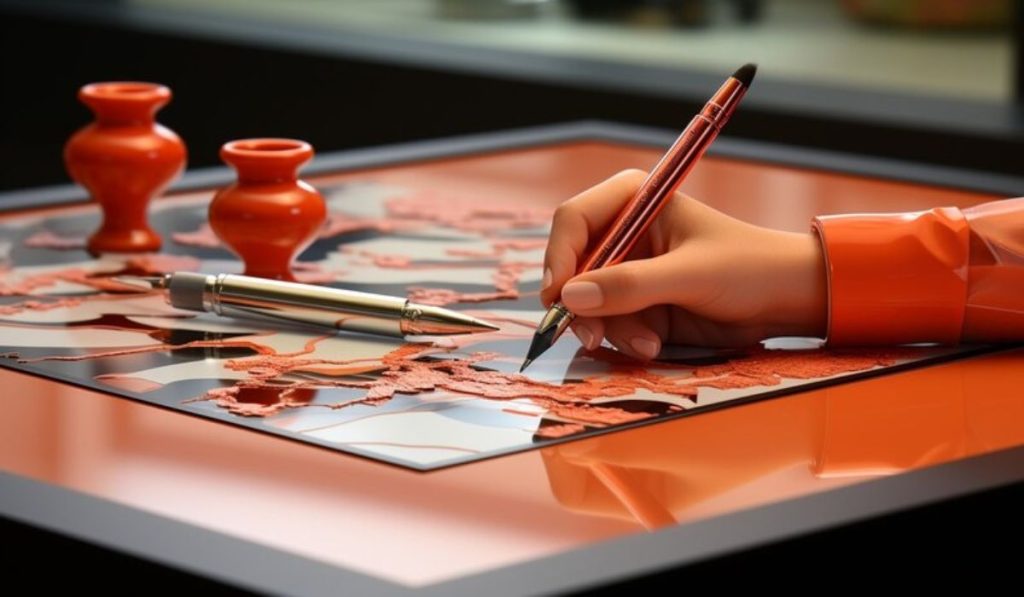Easy:7nbbaotekl8= Drawings are simple sketches anyone can make. They use basic shapes and lines. These drawings don’t need much skill or fancy tools. You can create them with just a pencil and paper.
Simple art ideas for beginners include doodling, stick figures, and nature scenes. These help new artists build confidence. They’re fun ways to start exploring creativity. With practice, even beginners can make nice pictures.
What is Easy:7nbbaotekl8= Drawings?
Ever felt like you couldn’t draw to save your life? Think again! Easy drawings are here to change your mind.
These simple sketches are all about keeping things basic. No fancy techniques or expensive art supplies are needed. Just grab a pencil and paper, and you’re ready to go. Easy drawings use simple shapes and lines that anyone can master.
From cute animals to cool cartoon characters, the world of Easy:7nbbaotekl8= Drawings is full of possibilities. It’s perfect for beginners who want to dip their toes into art. Each little doodle builds your confidence and skills.
Ready to unleash your inner artist? Easy drawings are your ticket to a world of creativity. You might surprise yourself with what you can create. Who knows? Your next simple sketch could be the start of an exciting artistic journey!
Mastering Line Techniques
Lines are the building blocks of Easy:7nbbaotekl8= Drawings. They can be straight, curved, or wiggly. Learning to control your lines is key to better art.
Start with basic shapes like circles and squares. Practice making them with single, smooth lines. Don’t worry if they’re not perfect at first. Keep trying until your hand feels more steady.
Next, explore different line weights. Press harder for darker, bolder lines. Use a light touch for softer, thinner lines. Mix these up in one drawing to add depth and interest.
Finally, try different line styles. Experiment with dots, dashes, and zigzags. Use these to create textures in your drawings. Remember, mastering lines takes time and practice. Keep at it, and you’ll see improvement in all your artwork.
Step-by-step tutorial for a simple yet impressive Easy:7nbbaotekl8= Drawings
Let’s draw a cute cartoon cat! Start with a big circle for the head. Don’t worry if it’s not perfect – that’s part of the charm.
Next, add two pointy triangles on top of the ears. Inside the big circle, draw two smaller circles for eyes. Add a tiny triangle for the nose, and a curved line below for the mouth.
Now for the body. Draw an oval shape below the head. Add four small ovals for paws. Draw a long, curvy line for the tail. It can be straight or looped – you decide!
Finally, let’s add some details. Put little circles inside the eyes for pupils. Draw whiskers with short lines. Add fur texture with small, quick strokes around the edges. There you have it – your very own cartoon cat!
Proportions and Perspectives
Proportions are key in art. They help make things look right. Big or small, it’s all about how parts relate. Getting proportions correct takes practice and patience.
Perspective adds depth to Easy:7nbbaotekl8= Drawings. It makes flat art look 3D. Things far away look smaller. Things up close look bigger. This trick fools our eyes.
There are different types of perspectives. One point is the easiest to start with. Two-point is a bit harder. Three-point is for pros. Each type has its own rules.
Learning these skills takes time. Don’t get frustrated if it’s hard at first. Keep practicing and you’ll improve. Soon, your art will look more real and lively.
Applying Perspective in Easy:7nbbaotekl8= Drawings?
Perspective can make simple Easy:7nbbaotekl8= Drawings pop. It’s not as hard as it seems. Start with basic shapes like boxes and cups. Draw them from different angles to practice.
One easy trick is the horizon line. It’s just a line across your paper. Things above it look higher up. Things below it look lower down. This small change adds depth.
Size matters in perspective too. Draw things smaller as they go back. A row of trees? Make each one tinier than the last. It’s a quick way to show distance.
Don’t worry about getting it perfect. Even a little perspective goes a long way. Try adding shadows next. They help objects look grounded. Keep it simple and have fun experimenting.
Tips for practicing and improving your skills
Daily practice:
- Draw something every day, even if just for 5 minutes
- Keep a small sketchbook with you for quick doodles
- Try different subjects to expand your skills
- Don’t worry about perfection – focus on regularity
Learn from others:
- Watch online tutorials for new techniques
- Join a local art class or group
- Ask for feedback from fellow artists
- Study works you admire to understand their methods
Experiment with tools:
- Try different pencils, pens, or brushes
- Explore digital drawing if you haven’t already
- Mix media to find what you enjoy most
- Don’t be afraid to make mistakes – they help you learn
Challenge yourself:
- Set small, achievable goals for improvement
- Participate in online drawing challenges
- Redraw old pieces to see your progress
- Push out of your comfort zone regularly
Understanding Human Proportions
Human proportions are like a puzzle. Each part fits together in a special way. The head is a good measuring tool. Most adults are about 7-8 heads tall.
Arms reach about halfway down the thighs. Fingertips touch mid-thigh when standing straight. Elbows line up with the bottom of the ribcage. Knees are halfway between hips and feet.
The face has its own rules too. Eyes sit halfway up the head. The space between the eyes is about one eye wide. The bottom of the nose is halfway between the eyes and the chin. The ears go from the eyebrows to the bottom of the nose.
These rules aren’t perfect for everyone. People come in all shapes and sizes. But knowing these basics helps a lot. It’s a good starting point for drawing any person. Practice these, and your figures will look more natural.
Frequently Asked Questions :
What are the best subjects for beginner artists to draw?
Start with simple objects like fruits, mugs, or flowers. These have basic shapes and are easy to find for practice.
Do I need expensive art supplies to start drawing?
Not at all! A regular pencil and paper are enough to begin. You can upgrade your supplies as you improve and discover what you like.
How often should I practice drawing to get better?
Try to draw a little bit every day, even if it’s just for 10-15 minutes. Consistency is key to improving your skills.
What’s the easiest way to learn how to draw faces?
Begin with basic shapes. Start by drawing a circle for the head, then add guidelines for the eyes, nose, and mouth. Practice this simple method before adding details.
I’m not good at drawing. How can I make my art look better?
Don’t be too hard on yourself! Focus on enjoying the process. Try copying simple drawings you like, and remember that everyone starts somewhere. Keep practicing, and you’ll see improvement over time.
Conclusion :
Starting to Easy:7nbbaotekl8= Drawings can be fun and rewarding. Remember, everyone begins somewhere. Don’t worry about making perfect art right away. Instead, focus on enjoying the process of creating. Try different subjects and techniques to find what you like best. With regular practice and patience, you’ll see your skills improve over time. Keep drawing, stay curious, and most importantly, have fun with your art journey.







